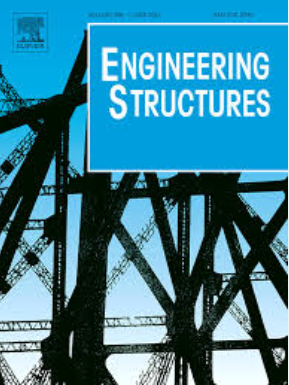基于状态的高压储氢容器疲劳寿命监测的减基数字孪生
IF 6.4
1区 工程技术
Q1 ENGINEERING, CIVIL
引用次数: 0
摘要
针对高压储氢容器的状态维护问题,提出了一种基于降基分析实现的数字孪生模型的疲劳寿命统计监测方案。该策略包括四个步骤:基于贝叶斯推理的反状态估计、基于正演分析的等效应力评估、基于应力寿命法的疲劳寿命预测和基于统计分析的状态维护。为了加快整个监测过程,我们利用减少基近似,使快速而准确的结构模拟成为可能。为了演示,我们考虑一个完整的压力容器受到不同的内压,其次是一个受损的压力容器,随着时间的推移,凹痕尺寸逐渐增加。数值结果证实,由于估计状态的样本均值与真实状态的偏差小于1%,所构建的简化基数字孪生几乎与物理对应物完全相同。此外,使用简化基数字孪生比使用有限元数字孪生的统计疲劳寿命预测平均快52.86倍。总之,我们提出的方法利用减少基数的数字孪生为监测压力容器的疲劳寿命提供了有效的解决方案,同时提供了准确性和效率。本文章由计算机程序翻译,如有差异,请以英文原文为准。
Condition-based fatigue life monitoring of a high-pressure hydrogen storage vessel using a reduced basis digital twin
For the condition-based maintenance of high-pressure hydrogen storage vessels, we propose a statistical fatigue life monitoring scheme hinging on a digital twin realized by reduced basis analysis. The proposed strategy comprises four steps: inverse state estimation by Bayesian inference, equivalent stress evaluation by forward analysis, fatigue life prediction by the stress-life approach, and condition-based maintenance by statistical analysis. To expedite the entire monitoring process, we capitalize on reduced basis approximation that enables a rapid yet accurate structural simulation. For demonstration, we consider an intact pressure vessel subject to different internal pressures, followed by a damaged pressure vessel with a progressively increasing dent size over time. Numerical results confirm that the constructed reduced basis digital twins are nearly identical to the physical counterparts, as the sample means of estimated states deviate from the true states by less than 1%. Furthermore, statistical fatigue life prognosis using reduced basis digital twins is more expeditious than that using finite element digital twins by a factor of 52.86 on average. In conclusion, our proposed approach leveraging a reduced basis digital twin presents an effective solution for monitoring the fatigue life of pressure vessels, offering both accuracy and efficiency.
求助全文
通过发布文献求助,成功后即可免费获取论文全文。
去求助
来源期刊

Engineering Structures
工程技术-工程:土木
CiteScore
10.20
自引率
14.50%
发文量
1385
审稿时长
67 days
期刊介绍:
Engineering Structures provides a forum for a broad blend of scientific and technical papers to reflect the evolving needs of the structural engineering and structural mechanics communities. Particularly welcome are contributions dealing with applications of structural engineering and mechanics principles in all areas of technology. The journal aspires to a broad and integrated coverage of the effects of dynamic loadings and of the modelling techniques whereby the structural response to these loadings may be computed.
The scope of Engineering Structures encompasses, but is not restricted to, the following areas: infrastructure engineering; earthquake engineering; structure-fluid-soil interaction; wind engineering; fire engineering; blast engineering; structural reliability/stability; life assessment/integrity; structural health monitoring; multi-hazard engineering; structural dynamics; optimization; expert systems; experimental modelling; performance-based design; multiscale analysis; value engineering.
Topics of interest include: tall buildings; innovative structures; environmentally responsive structures; bridges; stadiums; commercial and public buildings; transmission towers; television and telecommunication masts; foldable structures; cooling towers; plates and shells; suspension structures; protective structures; smart structures; nuclear reactors; dams; pressure vessels; pipelines; tunnels.
Engineering Structures also publishes review articles, short communications and discussions, book reviews, and a diary on international events related to any aspect of structural engineering.
 求助内容:
求助内容: 应助结果提醒方式:
应助结果提醒方式:


